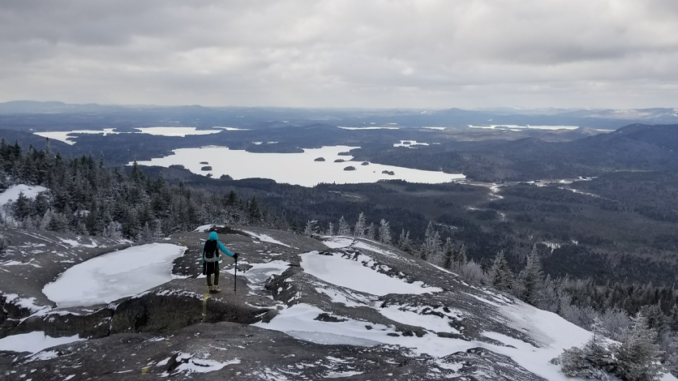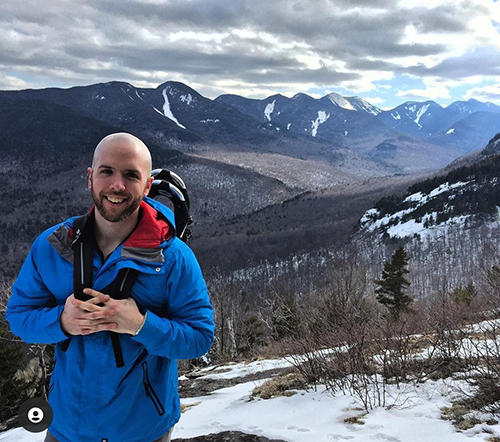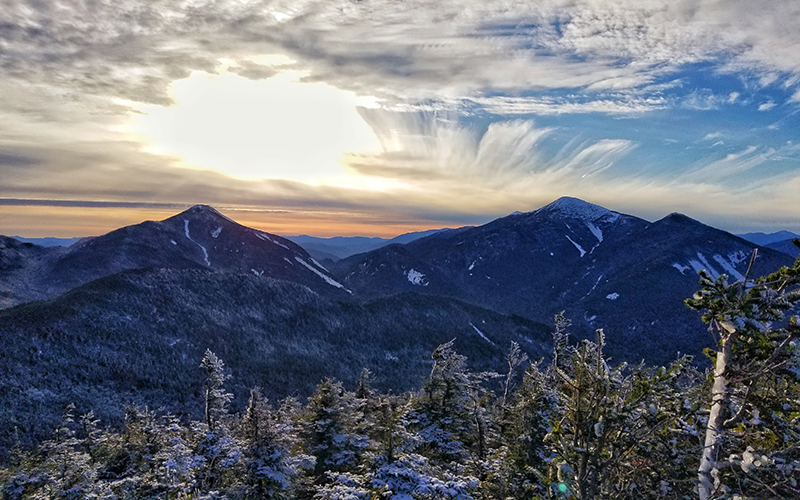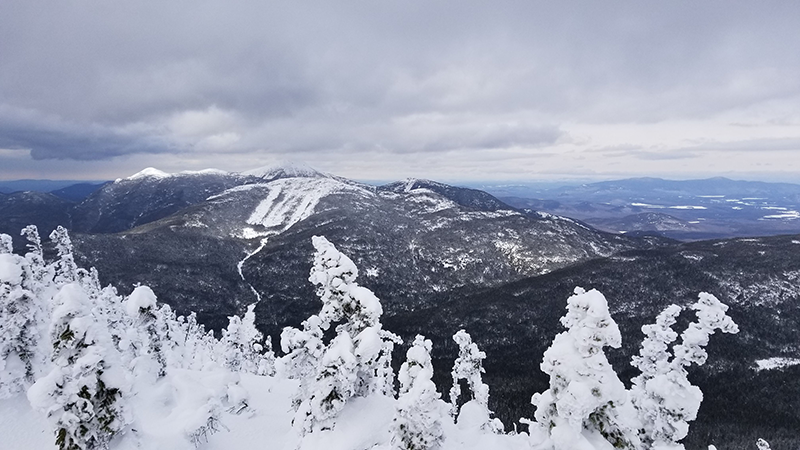
By Ken Sturtz
Most people hike the Adirondacks in summer, but going during winter can be fun too

Above the tree line on Mount Haystack — elevation 4,960 feet — snow swirled around Jon McDonald and his friend and 50 mph winds battered them with each step. They discussed turning back, but decided to press on, trudging the final few tenths of a mile to the summit.
Each year hikers flood the Adirondacks, eager to enjoy its seemingly endless trails and mountains. Many set a goal of becoming “46ers” by climbing the 46 High Peaks originally thought to have an elevation of at least 4,000 feet. Far fewer become winter 46ers.
Climbing the High Peaks in winter can be “an incredibly worthwhile endeavor,” said McDonald, who has worked as an outdoor instructor and hiked the 46ers in summer and winter. It’s important, however, to have significant hiking experience before attempting them.
“If you’re looking to do that it should not be your first hiking challenge,” he said. “You should not be starting with that because it’s such a beast.”
McDonald had plenty of experience before he got into winter hiking. He also made it a point to climb each of the 46ers at least once in warmer weather so he was familiar with the terrain.
Beginners should spend significant time hiking before attempting winter hiking. Talking with other hikers, researching the trails and joining one of the online forums devoted to Adirondack hiking can give novices a better understanding of what they’re getting into.
Even experienced hikers with no winter experience should start slow with small outings, McDonald said. Something as simple as a long walk on a bad weather day will help you figure out your layering system and get used to being in the cold for extended periods of time.
 While it’s easy to imagine winter hiking as little more than teeth-chattering drudgery, that’s hardly the case.
While it’s easy to imagine winter hiking as little more than teeth-chattering drudgery, that’s hardly the case.
On many days the weather is quite pleasant. And with fewer people on the trails, hikers can feel like they have the forest to themselves, allowing them to soak up the breathtaking winter landscapes and bask in the tranquility.
Winter hiking also bestows more practical benefits, said Mary Glynn, an education program manager with the Adirondack Mountain Club, who has hiked the 46ers and is attempting to hike the 140-mile Northville-Placid Trail in winter.
“The Adirondacks are known for their bugs and their mud and for the most part the bugs are dead in the winter and the mud is covered in a deep blanket of snow,” she said.
Winter hiking does present additional challenges and significantly lowers your margin for error, Glynn said. For example, in summer a hiker who is unexpectedly outside overnight can survive the elements. In a winter setting an unexpected night outside can be far more serious.
“So, if you have an emergency in the backcountry, it’s not going to be your broken leg that kills you,” Glynn said. “It’s going to be the hypothermia that sets in before rescuers can arrive.”
That’s why preparedness is key. Hikers should bring plenty of extra clothing and equipment.
Even if she’s doing a less challenging day hike, Glynn brings extra clothing, a sleeping bag, sleeping pad, hand warmers and a thermos with a hot drink. Taking that gear can be extremely important if you need to keep yourself warm while waiting for help.
Other equipment is specific to winter hiking. Micro spikes are generally recommended for winter as well as late fall and early spring. That’s because snow and ice can occur at higher elevations even in mild weather.
It’s also important to realize that weather conditions in the mountains can turn on a dime and that hypothermia can sneak up on someone before they realize anything is wrong.
McDonald said he’s been on hikes when it felt pleasant while hiking, but the cold crept in when his group slowed down and stopped.
“Or you’re so cold so you keep moving and go beyond your energy level and make a mistake because you’re tired,” he said.
Hypothermia can occur in seemingly beautiful, sunny weather. Glynn was hiking on a 50-degree day in October when she encountered two hikers. They were wearing cotton, had sweated through their clothes and one had stopped to rest. He was shivering and in the early stages of hypothermia.
Hypothermia is one of the reasons Glynn doesn’t hike alone in winter. It’s much easier to spot the warning signs in someone else than in yourself. And if someone does get into trouble, there’s a small group on hand to help.
It’s wise to be mindful that the days are shorter in winter and there’s less daylight. Winter hikes tend to take much longer than in summer, Glynn said. Breaking trails takes time and to avoid sweating or getting chilled it’s necessary to stop and add or remove layers of clothing.
Glynn recommends starting early, choosing shorter hikes and setting a turnaround time based on your pace. It’s a good idea to discuss it with your group so you can adjust accordingly and reach your destination on time.
“It’s easy to just keep climbing and climbing and then all of a sudden you’re seven miles from the car, the sun is setting and you didn’t think about it,” she said.
While safety should be front of mind, it’s also important to give yourself permission to enjoy winter hiking.
McDonald said the 46ers represent a fraction of the hiking trails and mountains available in the Adirondacks and people can become so focused on trying to cross each mountain off their list that they forget to have fun.
“There are so many beautiful hikes that people just completely miss out on if all they’re worried about is hiking the 46,” he said.
